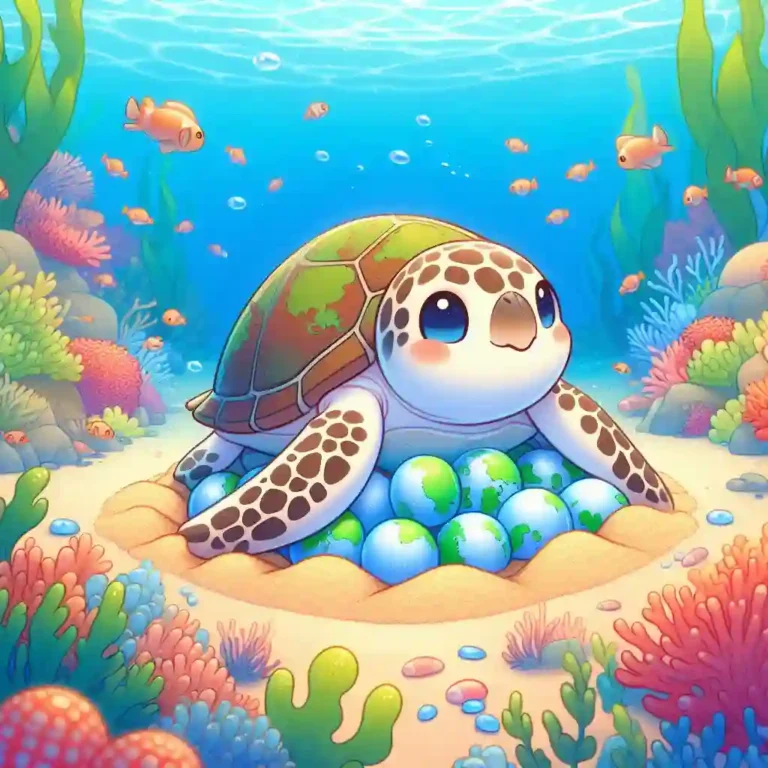Why Is My Turtle Swimming Against the Glass?
Why Is My Turtle Swimming Against the Glass? As a turtle owner, you’ve likely witnessed the frustrating sight of your beloved pet swimming furiously against the glass walls of its tank.
But why do turtles engage in this behavior, and what can you do to prevent it?
In this blog, we’ll delve into the world of turtle behavior and explore the reasons behind this perplexing phenomenon.
Why Is My Turtle Swimming Against the Glass? – A Quick Guide
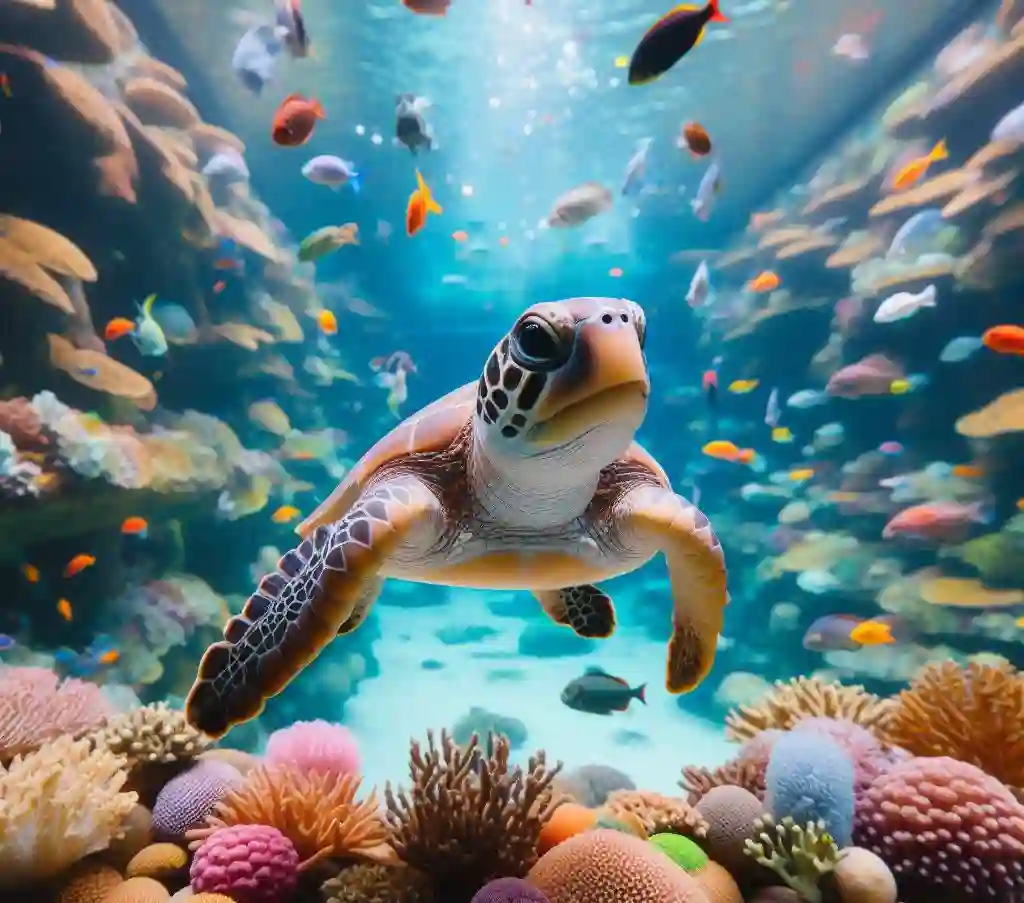
Reasons Why Your Turtle May Be Swimming Against the Glass:
- Stress: Turtles may swim against the glass due to stress caused by changes in their environment, such as a new tankmate or a change in water temperature.
- Boredom: Turtles need mental and physical stimulation. If they’re not getting enough exercise or mental stimulation, they may swim against the glass out of boredom.
- Instinctual Behavior: Turtles may swim against the glass due to instinctual behavior, such as the urge to migrate or explore their surroundings.
- Poor Tank Conditions: Poor water quality, inadequate filtration, or a lack of hiding places can cause turtles to swim against the glass.
- Medical Issues: Medical issues, such as respiratory infections or shell rot, can cause turtles to swim against the glass.
What You Can Do to Help:
- Provide a Stimulating Environment: Add plants, rocks, and other decorations to create a stimulating environment.
- Increase Exercise Opportunities: Provide a large enough tank with plenty of swimming space and opportunities for exercise.
- Reduce Stress: Reduce stress by maintaining good water quality, providing a comfortable temperature range, and minimizing changes in the tank.
- Consult a Veterinarian: If your turtle is swimming against the glass due to a medical issue, consult a veterinarian for proper diagnosis and treatment.
The Great Escape: Why Turtles Swim Against the Glass
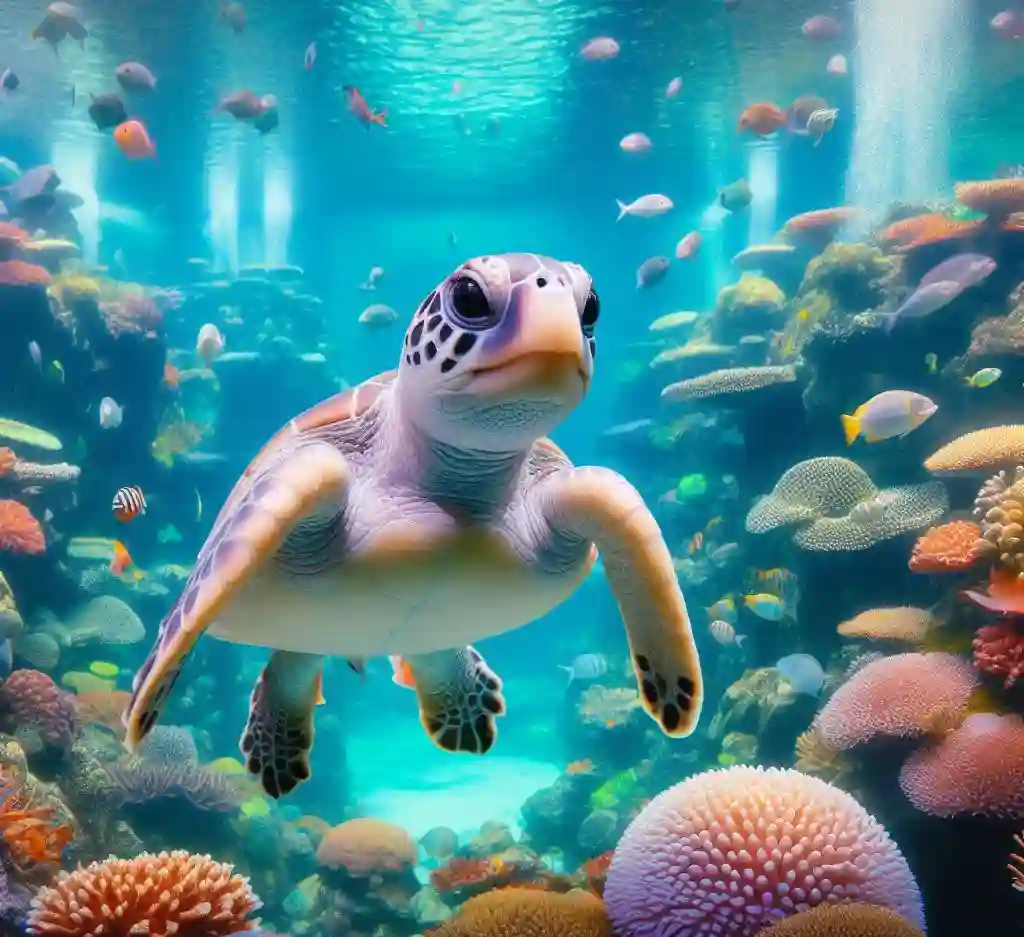
Instinctual Behavior
In the wild, turtles are programmed to migrate long distances in search of food, shelter, and potential mates. This innate instinct drives them to keep moving, even in the absence of a visible stimulus. In captivity, this instinctual behavior is still present, but it’s redirected towards the glass walls of their tank. Your turtle may be trying to fulfill its natural urge to migrate, but in a confined space.
Visual Cues
Turtles have a unique visual system that allows them to detect movement and changes in their environment. When they see their own reflection in the glass, they may perceive it as a barrier or an obstacle to be overcome. This can trigger a response to swim towards the glass, as if trying to get past the “obstacle” or explore the “new” environment.
Boredom and Lack of Stimulation
Turtles are intelligent creatures that require mental and physical stimulation. If their tank is too small, lacks hiding places, or doesn’t provide enough activities, they may resort to swimming against the glass due to boredom or frustration. This behavior can be a cry for help, indicating that their environment needs to be enriched.
Territorialism and Dominance
In some cases, turtles may swim against the glass as a way to establish dominance or defend their territory. If you have multiple turtles in the same tank, this behavior could be a sign of territorial disputes or a struggle for dominance.
Glass Half Full: Understanding Turtle Behavior
Decoding Turtle Body Language
Turtles communicate primarily through body language, using a range of postures, facial expressions, and movements to convey their emotions and intentions. By learning to recognize these cues, you can better understand your turtle’s behavior and respond accordingly.
- Relaxed posture: A relaxed turtle will have a calm, steady gaze, with its head and legs relaxed and slightly tucked in.
- Stress signals: A stressed turtle may display rapid breathing, a tense posture, or a “frozen” stance, indicating anxiety or fear.
- Courtship and mating: Turtles will often display specific courtship behaviors, such as head-bobbing, tail-wagging, or even “dancing” in front of a potential mate.
The Importance of Observation
Observing your turtle’s behavior is crucial for understanding its needs and preferences. By spending quality time with your pet, you can:
- Identify patterns and habits, such as feeding times, basking preferences, and social interactions.
- Recognize early signs of stress, illness, or discomfort, allowing for prompt intervention.
- Develop a deeper bond with your turtle, fostering trust and understanding.
Environmental Enrichment
A stimulating environment is essential for a turtle’s physical and mental well-being. By providing a varied and engaging space, you can:
- Reduce stress and boredom, minimizing glass-swimming behavior.
- Encourage natural behaviors, such as foraging, exploring, and socializing.
- Support your turtle’s overall health and longevity.
Tips for a Turtle-Friendly Environment
- Rotate decorations: Regularly change the layout of your turtle’s tank to keep them engaged and curious.
- Provide hiding places: Incorporate plants, rocks, and other hiding spots to reduce stress and create a sense of security.
- Offer sensory stimulation: Add different textures, colors, and smells to create a rich and varied environment.
Reflections of Frustration: What’s Behind the Behavior
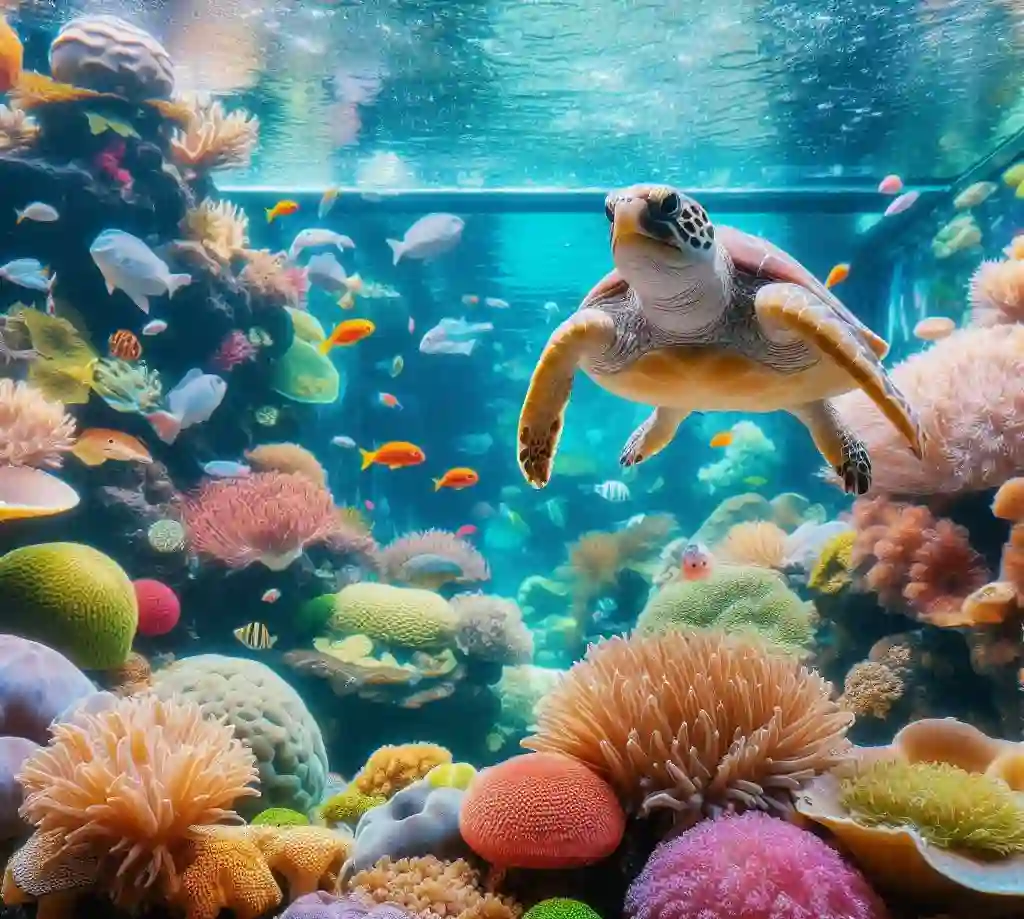
Frustration and Stress
Turtles, like humans, can experience frustration and stress when their needs aren’t met or when they’re unable to express natural behaviors. This can lead to glass-swimming, which may be a coping mechanism or a way to release pent-up energy.
- Environmental factors: Inadequate tank size, poor water quality, or inadequate hiding places can contribute to stress and frustration.
- Social factors: Lack of social interaction, territorial disputes, or dominance struggles can also lead to frustration.
Boredom and Lack of Stimulation
Turtles need mental and physical stimulation to thrive. Without it, they may resort to glass-swimming due to boredom or lack of engagement.
- Insufficient enrichment: A tank with too few hiding places, no toys, or inadequate decorations can lead to boredom.
- Lack of variety: A monotonous environment with no changes or surprises can cause turtles to seek stimulation through glass-swimming.
Medical Issues
In some cases, glass-swimming can be a sign of an underlying medical issue, such as:
- Pain or discomfort: Turtles may swim against the glass due to pain or discomfort caused by illness, injury, or poor water quality.
- Sensory issues: Some turtles may be sensitive to certain sounds, lights, or vibrations, leading to stress and glass-swimming.
Breaking the Cycle
To address glass-swimming behavior, it’s essential to identify and address the underlying causes. Try the following:
- Environmental enrichment: Add variety to your turtle’s tank with new decorations, toys, and hiding places.
- Social interaction: Provide opportunities for social interaction, such as introducing a compatible tankmate or providing interactive toys.
- Medical check-ups: Regular veterinary check-ups can help identify and address any underlying medical issues.
- Observation and patience: Spend time observing your turtle’s behavior, and be patient when introducing changes to their environment.
Tank Troubles: How Aquarium Design Affects Turtle Behavior

The Impact of Tank Size
A tank that’s too small can lead to stress, boredom, and frustration in turtles. A minimum tank size of 20 gallons is recommended for most turtle species, but even larger tanks can be problematic if not designed with the turtle’s needs in mind.
- Insufficient space: Turtles need room to swim, bask, and forage. Inadequate space can lead to stress, aggression, and glass-swimming behavior.
- Inadequate filtration: A small tank can be prone to water quality issues, which can negatively impact your turtle’s health and behavior.
The Importance of Hiding Places
Turtles need places to hide, rest, and feel secure. A lack of hiding places can lead to stress, anxiety, and glass-swimming behavior.
- Inadequate decorations: A tank with too few decorations or hiding places can cause turtles to feel exposed and vulnerable.
- Poor decoration placement: Decorations that are too small, too few, or poorly placed can fail to provide adequate hiding places.
The Role of Water Flow and Currents
Water flow and currents can significantly impact your turtle’s behavior and well-being.
- Inadequate water flow: A tank with inadequate water flow can lead to stagnant water, which can negatively impact water quality and your turtle’s health.
- Strong currents: Strong currents can stress or exhaust your turtle, leading to glass-swimming behavior or other abnormal behaviors.
Designing a Turtle-Friendly Tank
To create a harmonious and stimulating environment for your turtle, consider the following design principles:
- Provide ample space: Ensure your tank is large enough to accommodate your turtle’s needs, with plenty of swimming room and hiding places.
- Incorporate hiding places: Add decorations, plants, and other hiding places to help your turtle feel secure and relaxed.
- Optimize water flow: Ensure adequate water flow and circulation to maintain good water quality and reduce stress.
- Create visual interest: Incorporate varied decorations, colors, and textures to create a visually stimulating environment.
The Search for Freedom: Instinctual Behavior in Captive Turtles
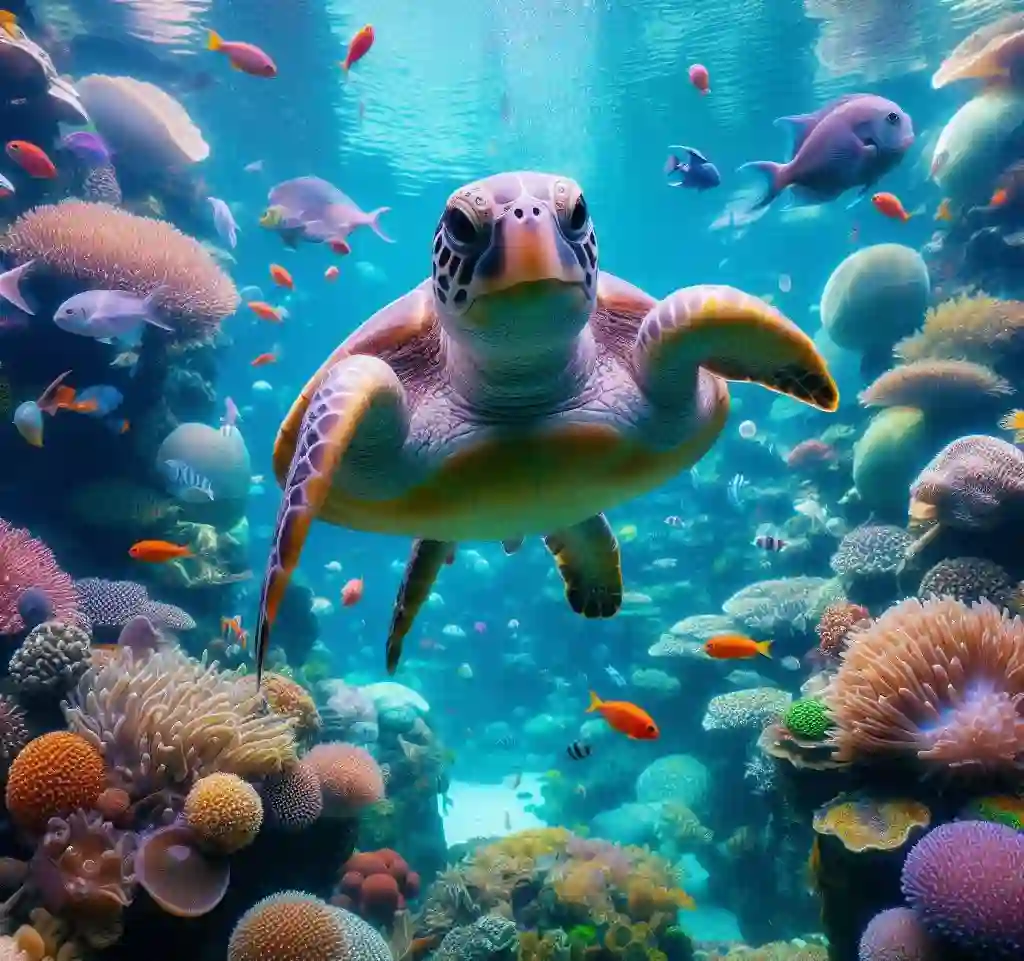
The Urge to Migrate
In the wild, turtles migrate long distances in search of food, shelter, and potential mates. This instinctual behavior is deeply ingrained, and even in captivity, turtles may still feel the urge to migrate. Without the freedom to roam, they may redirect this energy towards the glass walls of their tank, leading to glass-swimming behavior.
The Quest for Exploration
Turtles are naturally curious creatures, and in the wild, they spend a significant amount of time exploring their surroundings. In captivity, this instinctual behavior can manifest as glass-swimming, as turtles attempt to explore and investigate their environment.
The Need for Social Interaction
In the wild, turtles often live in social groups, interacting with each other and communicating through a range of behaviors. In captivity, the lack of social interaction can lead to stress, boredom, and abnormal behaviors like glass-swimming.
Providing a Sense of Freedom
While we can’t replicate the exact conditions of the wild, we can provide our turtles with a sense of freedom and fulfillment by:
- Providing a large, varied environment: A spacious tank with varied decorations, plants, and hiding places can help reduce stress and boredom.
- Encouraging exploration: Add new decorations, toys, or treats to stimulate your turtle’s natural curiosity and encourage exploration.
- Social interaction: Consider introducing a compatible tankmate or providing interactive toys and activities to stimulate social behavior.
- Mimicking natural behaviors: Provide opportunities for your turtle to engage in natural behaviors, such as foraging, basking, and swimming.
Stress and Anxiety: The Hidden Costs of Glass-Swimming
The Physiological Toll
Chronic stress and anxiety can have a profound impact on your turtle’s physiology, leading to:
- Weakened immune system: Chronic stress can suppress the immune system, making your turtle more susceptible to illness and disease.
- Metabolic changes: Stress can alter your turtle’s metabolism, leading to changes in appetite, digestion, and energy levels.
- Cardiovascular problems: Chronic stress can increase heart rate and blood pressure, potentially leading to cardiovascular problems.
The Behavioral Consequences
Glass-swimming can also have a profound impact on your turtle’s behavior, leading to:
- Increased aggression: Stress and anxiety can cause turtles to become more aggressive, leading to conflicts with tankmates or even owners.
- Decreased appetite: Stress can suppress appetite, leading to malnutrition and related health problems.
- Abnormal behaviors: Chronic stress can lead to abnormal behaviors, such as pacing, self-mutilation, or other destructive habits.
The Environmental Connection
The environment plays a critical role in your turtle’s stress levels. A poorly designed tank or inadequate care can exacerbate stress and anxiety, leading to glass-swimming behavior.
- Inadequate tank size: A tank that’s too small can lead to stress, boredom, and glass-swimming.
- Poor water quality: Inadequate filtration, poor water quality, or sudden changes can cause stress and anxiety.
- Inadequate hiding places: A lack of hiding places or inadequate decorations can lead to stress and anxiety.
Breaking the Cycle: Training and Enrichment Strategies
Training Strategies
Training can help redirect your turtle’s energy and attention away from glass-swimming. Try these strategies:
- Target training: Teach your turtle to target a specific object, such as a toy or a stick, to redirect their attention.
- Clicker training: Use positive reinforcement techniques, such as clicker training, to encourage desired behaviors.
- Environmental enrichment: Rotate toys, decorations, and hiding places to keep your turtle engaged and stimulated.
Enrichment Strategies
Enrichment activities can help reduce stress and boredom, leading to a decrease in glass-swimming behavior. Try these strategies:
- Sensory stimulation: Provide a variety of textures, colors, and smells to stimulate your turtle’s senses.
- Problem-solving: Offer puzzle toys or hidden treats to challenge your turtle’s problem-solving skills.
- Social interaction: Introduce a compatible tankmate or provide interactive toys to encourage social behavior.
Environmental Modifications
Modifying your turtle’s environment can help reduce stress and boredom, leading to a decrease in glass-swimming behavior. Try these strategies:
- Tank rearrangement: Rearrange the tank decorations and hiding places to create a new environment.
- Water changes: Perform regular water changes to maintain good water quality and reduce stress.
- Temperature and lighting: Adjust temperature and lighting to create a more comfortable environment.
Beyond the Glass: Creating a Stimulating Environment for Your Turtle
Why Stimulation Matters
A stimulating environment is essential for your turtle’s physical and mental health. Without it, your turtle may become bored, stressed, or even depressed. A stimulating environment can help:
- Reduce stress: A stimulating environment can help reduce stress and anxiety in your turtle, leading to a happier and healthier pet.
- Promote exercise: A stimulating environment can encourage your turtle to exercise and engage in natural behaviors, such as swimming and foraging.
- Improve mental health: A stimulating environment can help improve your turtle’s mental health by providing a sense of purpose and fulfillment.
Creating a Stimulating Environment
So, how can you create a stimulating environment for your turtle? Here are some tips:
- Provide a variety of decorations: Add plants, rocks, and other decorations to create a visually stimulating environment.
- Rotate toys and decorations: Rotate toys and decorations regularly to keep your turtle engaged and interested.
- Create hiding places: Provide hiding places, such as plants or rocks, to give your turtle a sense of security and comfort.
- Offer sensory stimulation: Provide sensory stimulation, such as different textures, colors, and smells, to engage your turtle’s senses.
- Encourage foraging: Encourage foraging behavior by hiding food or treats around the tank.
Tips for Specific Turtle Species
Different turtle species have different needs and preferences. Here are some tips for specific species:
- Red-eared sliders: Provide a variety of plants and a basking area to encourage natural behaviors.
- Sulcata tortoises: Provide a large, open area for exercise and a variety of hiding places to reduce stress.
- Box turtles: Provide a variety of plants and a shallow water area for swimming and foraging.
FAQs
Q: Why do turtles swim against the glass?
A: Turtles swim against the glass for a variety of reasons, including stress, boredom, and instinctual behavior.
Q: Is swimming against the glass harmful to my turtle?
A: Chronic glass-swimming can be harmful to your turtle, leading to physical exhaustion, decreased appetite, and even injury.
Q: How can I prevent my turtle from swimming against the glass?
A: You can prevent glass-swimming by providing a stimulating environment, including a large tank with plenty of hiding places, varied decorations, and opportunities for exercise and foraging.
Q: What are some signs of stress in turtles?
A: Signs of stress in turtles include glass-swimming, pacing, self-mutilation, and changes in appetite or behavior.
Q: How can I reduce stress in my turtle?
A: You can reduce stress in your turtle by providing a comfortable and stimulating environment, maintaining good water quality, and providing regular veterinary care.
Q: Can I train my turtle to stop swimming against the glass?
A: Yes, you can train your turtle to stop swimming against the glass using positive reinforcement techniques, such as target training and clicker training.
Q: How long does it take to train a turtle to stop swimming against the glass?
A: The time it takes to train a turtle to stop swimming against the glass varies depending on the individual turtle and the training method used. With consistent and positive reinforcement, you can see results in a few weeks to a few months.
Q: Are there any specific tank requirements for preventing glass-swimming?
A: Yes, a large tank with plenty of hiding places, varied decorations, and opportunities for exercise and foraging can help prevent glass-swimming. A minimum tank size of 20 gallons is recommended for most turtle species.

Hello, I’m Aria Cooper, the heart and soul behind Swimmy Buddies. As a devoted fish aficionado, I share my aquatic adventures and expertise to inspire your own underwater explorations. 🐠🌊



